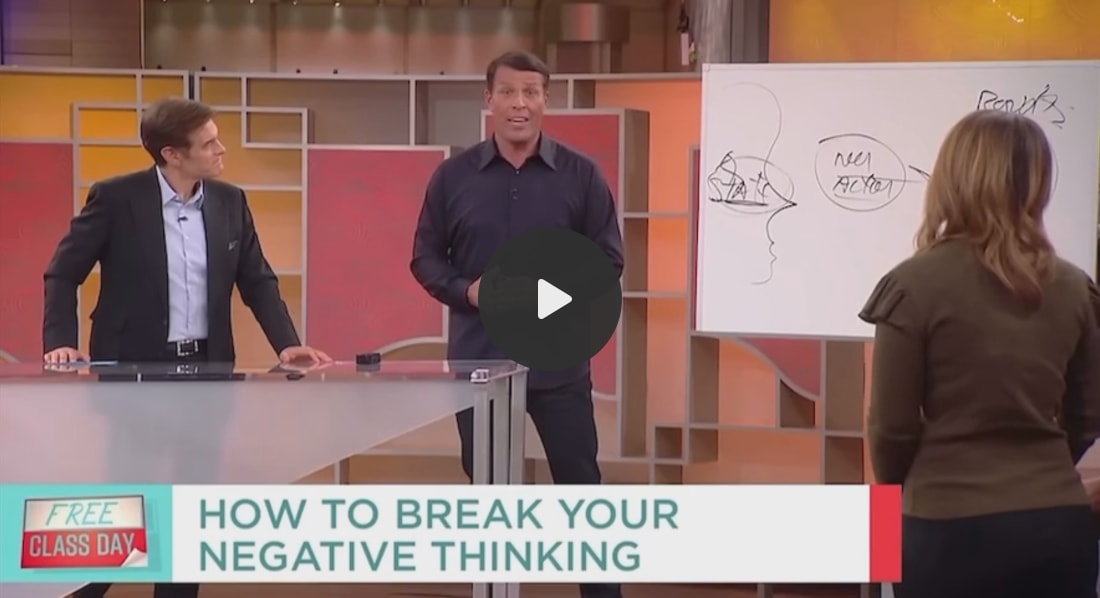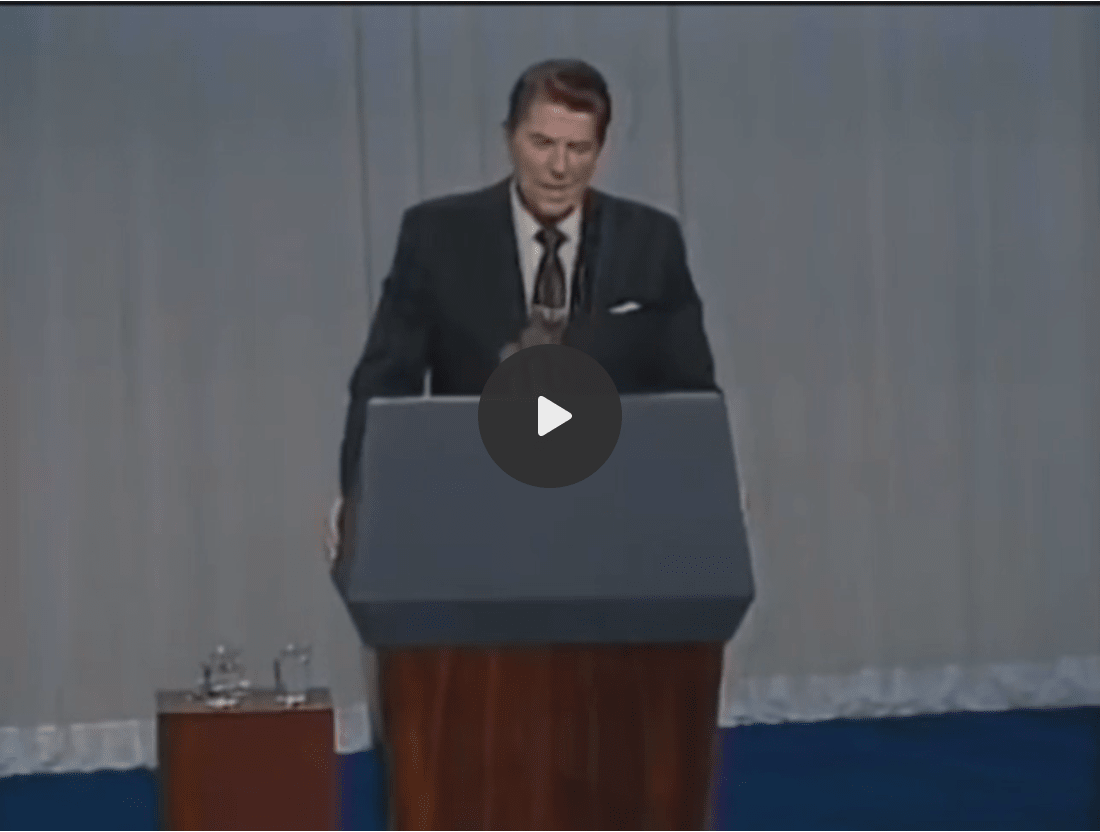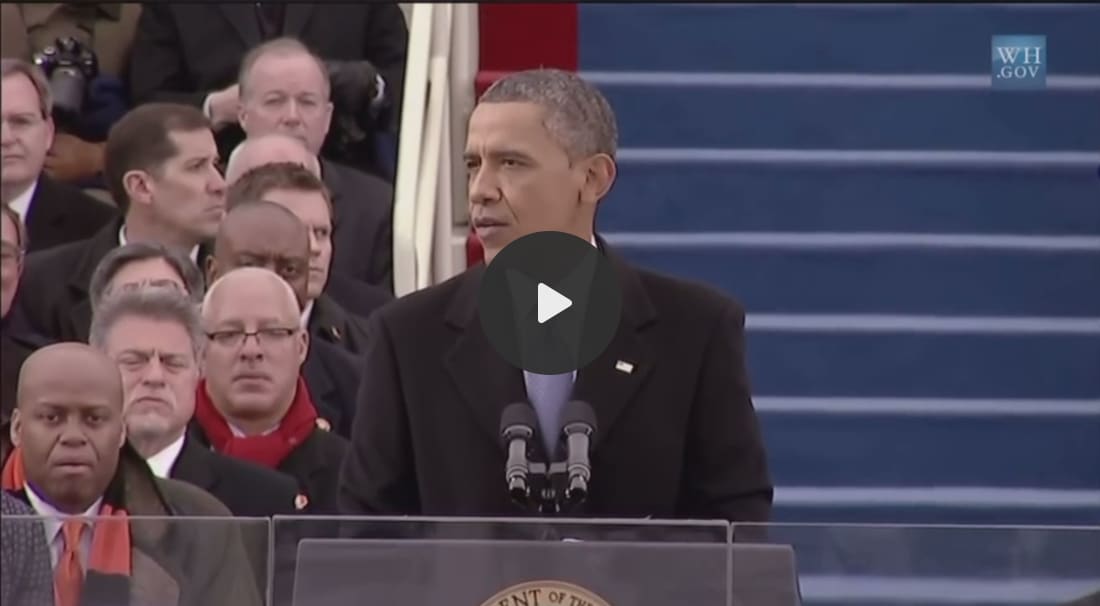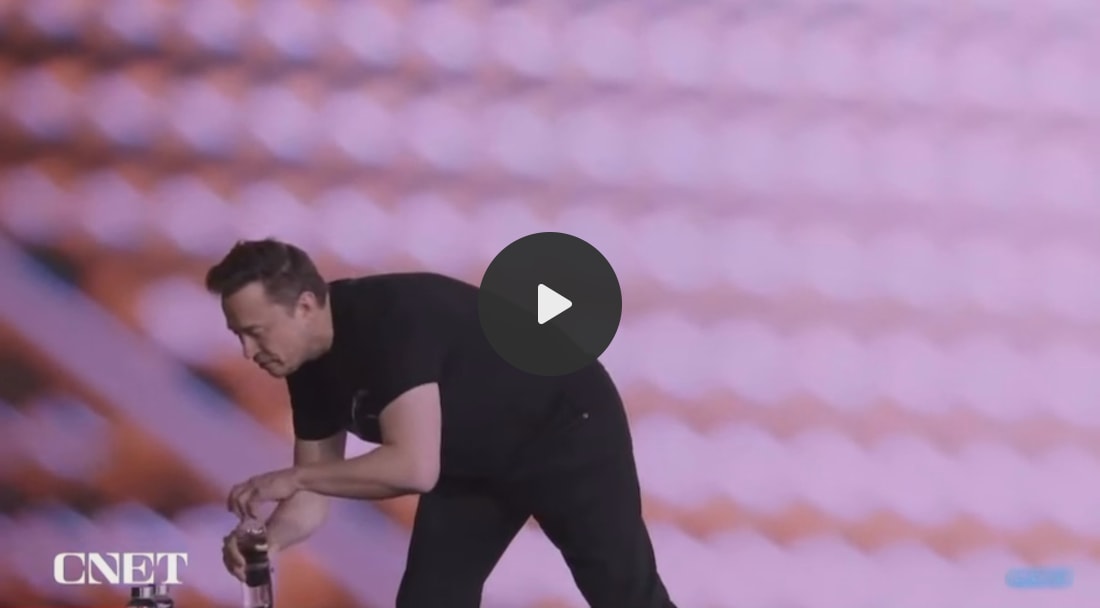11 Public Speaking Techniques from the World’s Greatest Speakers
11 Public Speaking Techniques from the World’s Greatest SpeakersThis is a deeply-reported, practical guide on public speaking techniques from the world's greatest speakers.You have no idea how much of my life I’ve spent avoiding solo speaking opportunities. So when the kind folks at the Supernode conference asked me to give the keynote speech, I felt a shiver shoot down my spine. I tried to have them change it from a keynote speech to a keynote fireside chat. I asked for a podium. I asked if I could have a piece of paper with my notes up there. I asked for anything that would divert the attention away from me standing awkwardly alone on stage. And then finally, I thought, “You have an entire chapter on mental toughness in your book. Get it together.” So I agreed to do the damn speech. The topic was: “How to Take Risks In Times of Uncertainty.” I shared seven stories with practical frameworks people could apply in their own lives. You can watch it below:  Needless to say, there’s a lot left to be desired in my speech. The terror within me is palpable — my nervous laughter, looking down at my slides far too long, avoiding eye contact with the audience, and the uncomfortable back-and-forth swaying. But I did it. And in the process of doing it, I gained a little more confidence while simultaneously developing an appetite for more public speaking opportunities. I started devouring any and all information on public speaking techniques — reading books (like Dale Carnegie’s ‘The Art of Public Speaking’), analyzing TED Talks, and watching hours of keynote speeches. So, the article below is a deeply-reported practical guide on public speaking techniques. (Editorial note: I am aware that many of the ‘greatest’ speakers include dictators & cult leaders who were able to convince millions of people to join their cause. They may have used many of the techniques highlighted below, but those people will not be featured in this article.) 1. Create an alter egoAs a writer, I’ve always been most comfortable writing in silence. Not speaking on stage. Not appearing on video. Not moderating panels in front of hundreds of people. My job was to put other people in the spotlight. But I was hyper-aware that those were skills I needed to gain if I wanted to have a career in media. The problem was that the mere thought of an on-stage interview in front of a live audience gave me heart palpitations. As I was preparing, I had a memory of my high school acting teacher saying, “Before you step on that stage, you have to get into character. You’ve got to talk like that person, act like that person, and feel the emotions that person feels.” Fast forward 10 years, I was sitting in my apartment determined to try the same technique. I watched countless videos of journalists and talk show hosts interviewing people in front of an audience. They were larger than life, they had open body language, they made jokes, and they had loads of energy. They seemed like an exaggerated version of themselves. So I decided that I would step into a similar character when I was on stage. I wouldn’t be me — I would perform as someone so confident that nerves couldn’t phase them. That shift in mindset changed my voice, my posture, and my confidence level. I had never found the right language to describe this phenomenon, but here’s how Beyoncé put it: “That moment when you’re nervous and that other thing kind of takes over for you.” “That other thing” is often referred to as an “alter ego.” Believe it or not, early in her career, Beyoncé was shy and reserved, which is antithetical to the powerhouse we saw on stage. That’s because she created an alter ego she called ‘Sasha Fierce’ that allowed her to perform with a level of confidence she herself didn’t yet have. “I’m not like her in real life at all,” Beyoncé said. “I’m not flirtatious and super-confident and fearless like her.”  Research supports these mental tricks we play on ourselves. Adopting an alter ego is an extreme form of “self-distancing,” a psychological tool that helps people reason more objectively and see the situation from a slight distance. As you can imagine, Beyoncé doesn’t need the crutch of an alter persona to get through her performances anymore. She’s become confident just being herself. “Sasha Fierce is done. I killed her,” Beyoncé told Allure in 2010. “I don't need Sasha Fierce anymore, because I've grown, and now I'm able to merge the two.” I’ll leave you with this quote from actor Cary Grant: “I pretended to be somebody I wanted to be until, finally, I became that person. Or he became me. Or we met at some point along the way.” 2. Raise your heart rate before the public speaking eventA great speech begins before you ever step on stage. If you struggle with nerves, you need to replicate that feeling of having your heart beat out of your chest while delivering your speech. Artist Taylor Swift recently said that she trained for her “Eras” world tour by singing her entire setlist while running on the treadmill. She did this every day for six months before the tour kicked off. Why? She wanted to mimic the feeling she would have on stage and make sure she never ran out of breath while performing for four straight hours. The same idea can be applied for any public speaking situation. Your body will respond on its own — especially if you’re someone prone to nerves. When I’m nervous, my heart starts racing, I start sweating, and my voice starts shaking. So how can I artificially summon these physical symptoms and practice my speech under duress? I’ve found that doing a moderate to intense workout (like a run on the treadmill) a few hours before my speech really makes a difference. As I start my run, my heart rate spikes and I start sweating. At that point, I start practicing my speech to make it muscle memory, allowing my brain to know that I can calmly get through it no matter how much physical stress I’m under. (Burning off cortisol and releasing endorphins probably helps, too.) Motivational speaker Tony Robbins has a pretty remarkable pre-speech ritual. He jumps on a mini trampoline, does a cold plunge, dances, and power poses. Only then is he ready for the stage. As my friend Jordy told me, “Remember, you can’t think your way out of nervousness. You have to focus on taking control of your body.” This tip is not just useful for public speaking. It’s also useful for life. Watch this video to see how you can change your emotional state by changing your physiology, not by ruminating: 3. Keep your audience “warm”Last year, I was speaking at a FORTUNE conference. When I got up on stage to introduce the next panel, my voice started shaking uncontrollably to the point where I had to stop and mutter out an, “Excuse me.” This was unusual for me because I have already had so much practice that this shouldn’t have happened — but it did. Afterward, one of the CEOs in attendance told me that this happens to him when he starts out “cold.” What he meant by that is that you haven’t had time to warm up the audience and crack the tension. As a result, you start feeling self-conscious and hyper-aware that all eyes are on you. Some great public speakers “warm up” the audience by addressing them with a question or making a joke. It builds rapport between the speaker and the audience before they jump into their material. You find that MCs at comedy shows do this really well. Their job is to essentially warm up the audience before the comic comes out. One piece of advice is that they should get the audience to clap two or three times because it creates a feeling of “we are in this together.” One person on Reddit shared the following three questions that get you three rounds of applause in 10 seconds. "By round of applause, who's been here before?" "Put your hands together if you have never been here before?" "Fantastic, welcome to all of you. Now who’s ready to see some great comedy?" Tony Robbins is a master public speaker who keeps his audience “warm” for hours on end through constant engagement. He asks attendees to clap, answer questions, repeat his phrases back to him, yell, dance, jump, and laugh at his jokes. Here’s an example where in a matter of 1 minute, he gets the audience members to yell, clap, jump, dance, cheer, and high-five each other. All in one short minute. This is an example of an audience that’s not warm — it’s burning hot: 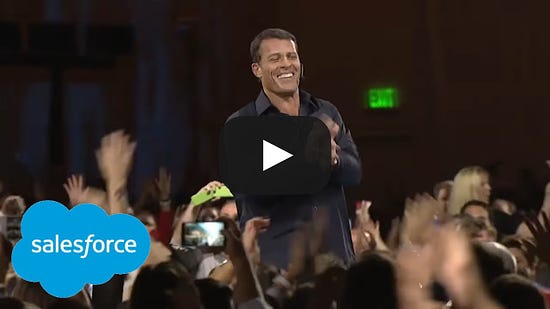 The lesson here is: Never start out “cold,” and think of strategies to keep your audience “warm” for the duration of your speech. Enjoying this? For more like this, make sure to sign up for The Profile here: 4. Address the group as if you’re addressing an individualYou may be addressing a group of hundreds, if not millions of people, but the key is to speak to them as though they are an individual. This builds intimacy and makes your speech more personal. Former U.S. president Ronald Reagan was known as “The Great Communicator” precisely because of this technique. You can see this in the 1980 presidential debate against Jimmy Carter. Carter began his concluding statement by referring to American voters in the third person, saying: “The American people now are facing, next Tuesday, a lonely decision.” When it was Reagan’s turn, he appealed to the voters individually saying, “Next Tuesday all of you will go to the polls,” and he finished his remarks with the now famous question, “Are you better off than you were four years ago?” Referring to your audience as individuals dials up the intimacy and makes the speech feel much more personal. 5. Use polysyndeton (or ‘rolling conjunctions’) to make your speech more memorableDid you read this section title and think, “WTF is a ‘polysyndeton?” That leads me to my next point. Many speakers try to use complicated language to show the audience just how sophisticated and intelligent they are. This is often a mistake. It gives off cold and impersonal energy, which is likely the opposite of what you’re attempting to achieve. Enter “polysyndeton,” the rhetorical device originating in literature that repeats conjunctions such as and, but, or, nor in close succession, especially when most of them could simply replaced with a comma. It’s a complicated word illustrating a simple concept. Here’s an example of how Reagan used these “rolling conjunctions:” “Here in Wyoming, back where your farmers and ranchers and workers and small-business people dream big and toil hard to make dreams come true.” Another president who favored the use of polysyndeton was former U.S. President Barack Obama. In his second inaugural speech, Obama did it a few different times. Here are three examples:
Polysyndeton is so effective because it can be used to speed up or slow down the tempo of your speech. It creates a rhythmic cadence, which makes your speech more passionate, more relatable, and more memorable. 6. Use hand gestures and body language to dial up the charismaFormer U.S. President Bill Clinton is the king of hand gestures, and that’s a big part of how he charmed the people around him. He used this technique so well that he popularized a gesture dubbed the "Clinton thumb," which is often used by politicians to emphasize a point during a speech. It almost looks like he’s knocking on a door. You can see it in action below: 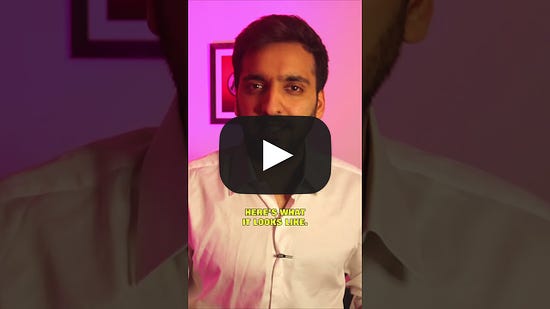 Though the gesture likely originated with John F. Kennedy, Clinton made it go mainstream. You’ve likely seen it used by politicians including Hillary Clinton, Justin Trudeau, Tony Blair, and Barack Obama. Rather than clenching a fist or pointing a finger, a gesture like this is effective because it evokes a more empathetic feeling in the audience. But the best public speakers don’t use hand gestures in isolation. Like Clinton, they use them in concert with other body language cues. Clinton’s 2012 speech was a masterclass in how to use various body language techniques to dial up the charisma. In the video below, you’ll see him extend his hands with his palms out when directly addressing the audience, saying things like, “Let me ask you something…,” and putting his hands on his heart saying, “This is personal to me…” He conveys an air of confusion by scratching his neck after saying, “Let’s look at the other big charge the Republicans made. It’s a real doozy.” 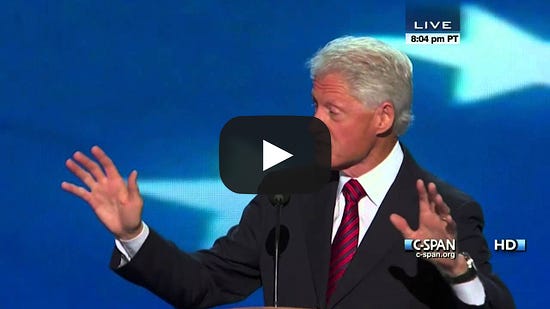 To contrast how body language can bring you closer to the people you are trying to reach, take a look at this 1992 presidential debate between George H. W. Bush and Bill Clinton. In it, a town hall participant asks how the recession has personally affected them and how they could possibly understand their voters’ economic woes if they themselves haven’t experienced the economic pain of the recession. Watch as Bush struggles with the question by opening with the generic line of, “I think the national debt affects everybody…” When the woman presses him on specifics, he gets rattled and his body language becomes more jerky as he starts pointing a finger at her. Now, watch as Clinton gets up to answer the same question. He immediately walks toward the woman to close the distance gap between them, looks her directly in the eyes, and shows he’s intently listening by asking her, “Tell me how it’s affected you again.” He then goes into specifics about exactly how it’s affected him. Near the end, the woman starts nodding along with him because she feels as though they are on the same team. His performance is magnetic (and he uses the ‘Clinton thumb’ here too): 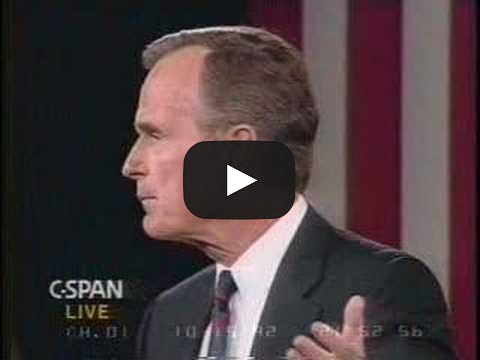 If you learn how to control your body in stressful situations, it can become one of the most valuable tools you have to increase charisma, engage your audience, and punctuate your points. If you like this learning guide, you may enjoy this one on interviewing: 7. Slow down by elongating your vowelsWhen many people give speeches, they rush through their words, which makes them seem scattered and nervous. By slowing down your speech, you can appear more confident and connected to your audience. Most advice you’ll hear is: “Make sure you intentionally pause between words to take a breath.” But there’s another way to to slow down your speech. It’s by focusing on elongating your vowels. This technique is particularly pertinent for when you’re giving a speech in English. English is a notoriously emotional language, and much of that emotion can be found in the vowels. Former British Prime Minister Margaret Thatcher, was a master at controlling her voice by drawing out the consonant and vowel sounds so that each and every one was heard. This technique allowed her to be easily understood and it injected emotion in her speeches. Note how she draws out the vowels in her famous “Iron Lady” speech: 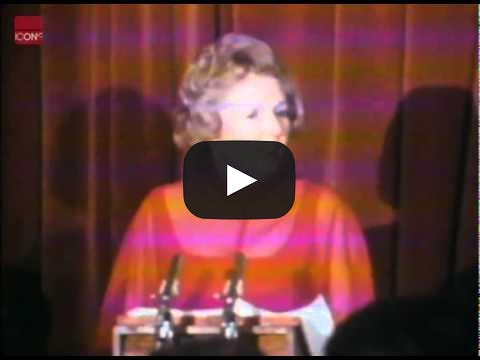 Elongating your vowels does two things: it slows you down and injects more emotion into your speech. Your audience will perceive you as more competent, confident, and in control. 8. Know that vulnerability is a double-edged swordRead any article about public speaking tips, and you’ll encounter the clichéd advice of: “Be vulnerable.” While there’s a time and place for vulnerability, sharing your struggles on stage may backfire. Of course, it depends on the context. One master of vulnerability is Spanx billionaire founder Sara Blakely. Blakely is an entrepreneurial powerhouse whose company was founded thanks to a moment of intense vulnerability. One night, she decided to wear her new white pants to a party, but her underwear left unflattering panty lines. So she cut the feet off a pair of pantyhose and turned them into a slimming undergarment now called “shapewear.” When she goes on stage, she normally opens with this story because she knows it’s intimate and vulnerable, and it will connect with her target audience in an instant. Look at how she begins her speech below. She starts with a light-hearted opening, saying, “Inspiration really does come from so many different places, and for me, the inspiration came from my own butt. I did not like how my butt looked in white pants.” 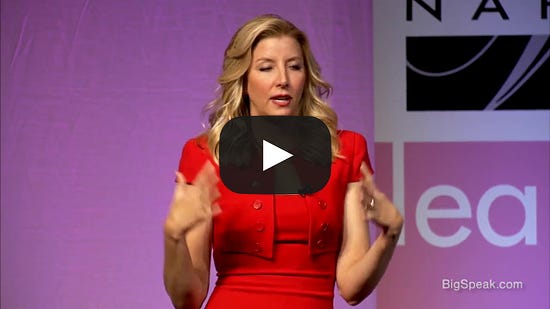 So if you’re speaking about how you overcame a moment of hardship or embarrassment, vulnerability is appropriate. But if you’re trying to unite a nation (or a company), you need to come from a place of extreme sturdiness and power. Few people know that John F. Kennedy had several medical conditions during his presidency. He was in near-constant pain due to back ailments and Addison's disease, a disorder of the adrenal glands. He often struggled to walk without crutches. But those who saw him speak never knew because he didn’t show his greatest vulnerabilities. He didn’t want to showcase or discuss his pain because his role as president required him to instill confidence in his constituents. 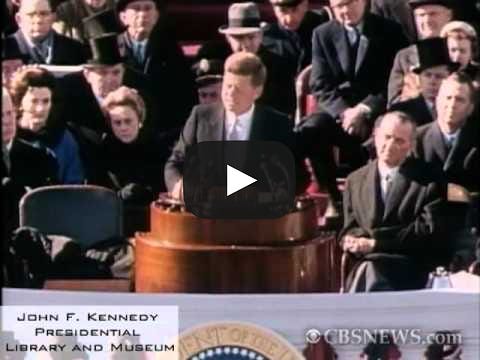 Knowing when to use vulnerability to your advantage is a superpower. But I’ve seen so many speeches in which a speaker’s message of vulnerability lands flat because it’s not aimed at their target audience. Know your audience to know your message. 9. Insert forbidden ‘filler words’ for effectI know, I know … just hear me out. Normally, you don’t want to use fillers words such as "um," "ah," "hmm," "like," "you know," and "alright” in your speech. It litters it with excess verbiage that adds nothing to your overall message. Except for when it does. Take someone like Elon Musk. Musk is a billionaire, a titan, and a very powerful figure in several different industries. He’s also a horrible public speaker, according to conventional thinking. He stumbles, he mumbles, he hedges, he looks at the floor, and he uses lots of filler words. One time, he said “um” 20 times in a 5-minute speech. Musk may be an objectively terrible speaker, but he’s a very compelling storyteller. When he speaks, people listen. Why? For one, it’s because he paints an ambitious version of the future that people want to be a part of, which allows to him cultivate a cult-like following. The filler words help humanize him. Most billionaires are polished and media-trained, but Musk stumbling through his sentences and saying, “like,” makes him seem like a man of the people. During a Tesla shareholder presentation, he literally stops mid-sentence and says, “I’ll just grab some water here,” and drinks water for several seconds before picking up his sentence from where he left off.
But people listen because he’s a captivating storyteller who paints an exciting future full of self-driving cars, implanting chips in your brain, and humans colonizing Mars. Apple co-founder Steve Jobs had a very similar informal, conversational style that pioneered how business presentations were done. He got people to dream big using very simple language. Before you prepare your next speech, asks yourself: “How can I mobilize people to get excited about the future I’m painting?” And rather than getting too cerebral and intellectual, insert some filler words that humanize you and make the vision seem more relatable. 10. End your speech with a clear call-to-actionA powerful speech can move you not just emotionally — it can move you to act. That’s exactly what the world’s most impactful speeches do. Take, for instance, the goliath of speeches: Martin Luther King’s “I Have a Dream.” Throughout the speech, King uses words such as “hope,” “dream,” and “faith,” but his powerful ending contains a clear call-to-action that emphasizes the need for a free and equal America. He declares, “Let freedom ring… and when this happens, we will be able to speed up that day when all of God’s children… will be able to join hands and sing… ‘free at last! Free at last! Thank God Almighty, we are free at last!’” King’s speech is an excellent example of what can happen as a result of effective communication that appeals to people’s emotions and moves them to act. He not only captivated the hearts and minds of Americans, but he ignited an entire movement. 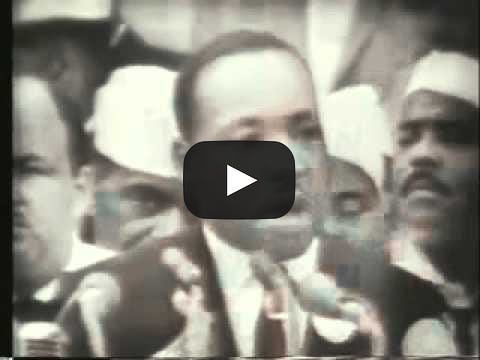 Another speech that stoked the fire was Amelia Earhart’s 1935 speech, “A Woman’s Place in Science.” Her speech was a radio address so she didn’t have the luxury of using body language to influence her messaging. She instead ignites the listener’s imagination using language laced with rich imagery. 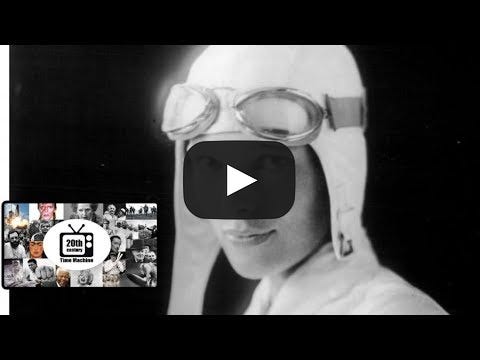 Her call-to-action? Women can — and should — take their place in whatever field they choose to pursue. She ends it with, "May I hope this movement will spread throughout all branches of applied science and industry, and that women may come to share with men the joy of doing. Those can appreciate rewards most who have helped create.” Winston Churchill employed repetition to drive his point across and urge people to mobilize. Perhaps the most famous excerpt from all of his speeches is this:
The rhythm of the repetition almost sounds like poetry that will stick in the listener’s heads long after the speech is over. Here’s the speech as dramatized in the film ‘Darkest Hour:’ 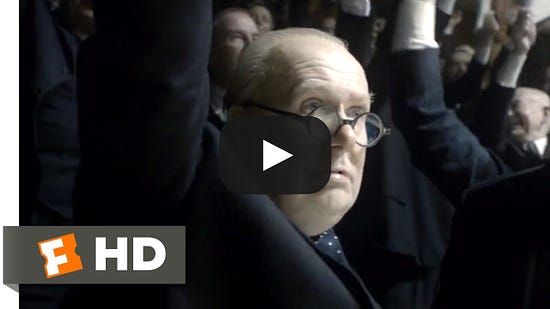 It’s powerful because it stirs an emotional response in the listener. Most speeches fail because they are dry, bland, soulless, and most importantly, they lack a point. When crafting your speech, make sure you reserve some time to come up with a clear and effective call-to-action for your listener. Write until you yourself feel the feelings you want to elicit in your audience. If you’re moved by it, it will likely move others, too. 11. Create a public speaking portfolioBecoming a better public speaker begins with the word “yes.” You need to be ready to say ‘yes’ to every little opportunity to speak. A panel? Yes. A wedding toast? Yes. Your friend’s out of control birthday party where you need to reel everyone in at the end of the night? Yes. All those tiny practice sessions earn you the confidence to perform in the moments that matter. As Dale Carnegie wrote in The Art of Public Speaking, “Practice, practice, practice in speaking before an audience will tend to remove all fear of audiences, just as practice in swimming will lead to confidence and facility in the water.” Most of all, he adds, “You must learn to speak by speaking.” … For more like this, make sure to sign up for The Profile here:Check out more of The Profile’s learning guides here:You're currently a free subscriber to The Profile. For the full experience, upgrade your subscription. |
Older messages
The Profile: The founder who lost $36 billion in one week & the professor protesting Columbia’s students
Sunday, May 5, 2024
And an update on my ill-fated half marathon... ͏ ͏ ͏ ͏ ͏ ͏ ͏ ͏ ͏ ͏ ͏ ͏ ͏ ͏ ͏ ͏ ͏ ͏ ͏ ͏ ͏ ͏ ͏ ͏ ͏ ͏ ͏ ͏ ͏ ͏ ͏ ͏ ͏ ͏ ͏ ͏ ͏ ͏ ͏ ͏ ͏ ͏ ͏ ͏ ͏ ͏ ͏ ͏ ͏ ͏ ͏ ͏ ͏ ͏ ͏ ͏ ͏ ͏ ͏ ͏ ͏ ͏ ͏ ͏ ͏ ͏ ͏ ͏ ͏ ͏ ͏ ͏ ͏ ͏ ͏ ͏ ͏
The Profile: Taylor Swift’s genius publicist & the man who exposed a nation’s therapy secrets
Sunday, April 28, 2024
This edition of The Profile features Tree Paine, Pat Tillman, John Nelson, and more. ͏ ͏ ͏ ͏ ͏ ͏ ͏ ͏ ͏ ͏ ͏ ͏ ͏ ͏ ͏ ͏ ͏ ͏ ͏ ͏ ͏ ͏ ͏ ͏ ͏ ͏ ͏ ͏ ͏ ͏ ͏ ͏ ͏ ͏ ͏ ͏ ͏ ͏ ͏ ͏ ͏ ͏ ͏ ͏ ͏ ͏ ͏ ͏ ͏ ͏ ͏ ͏ ͏ ͏ ͏ ͏ ͏ ͏
The Profile: Taylor Swift’s genius publicist & the man who exposed a nation’s therapy secrets
Sunday, April 28, 2024
This edition of The Profile features Tree Paine, Pat Tillman, John Nelson, and more. ͏ ͏ ͏ ͏ ͏ ͏ ͏ ͏ ͏ ͏ ͏ ͏ ͏ ͏ ͏ ͏ ͏ ͏ ͏ ͏ ͏ ͏ ͏ ͏ ͏ ͏ ͏ ͏ ͏ ͏ ͏ ͏ ͏ ͏ ͏ ͏ ͏ ͏ ͏ ͏ ͏ ͏ ͏ ͏ ͏ ͏ ͏ ͏ ͏ ͏ ͏ ͏ ͏ ͏ ͏ ͏ ͏ ͏
The Profile: The podcast host who manages $1.6 trillion & the woman who will decide which babies are born
Sunday, April 21, 2024
This edition of The Profile features Justin Ishbia, Nicolai Tangen, Dua Lipa, Julia Stiles, and more. ͏ ͏ ͏ ͏ ͏ ͏ ͏ ͏ ͏ ͏ ͏ ͏ ͏ ͏ ͏ ͏ ͏ ͏ ͏ ͏ ͏ ͏ ͏ ͏ ͏ ͏ ͏ ͏ ͏ ͏ ͏ ͏ ͏ ͏ ͏ ͏ ͏ ͏ ͏ ͏ ͏ ͏ ͏ ͏ ͏ ͏ ͏ ͏ ͏ ͏
The Profile: 10 Interview Techniques From the World’s Best Interviewers
Wednesday, April 17, 2024
This is the most comprehensive and practical guide on interviewing techniques from the world's very best conversationalists. ͏ ͏ ͏ ͏ ͏ ͏ ͏ ͏ ͏ ͏ ͏ ͏ ͏ ͏ ͏ ͏ ͏ ͏ ͏ ͏ ͏ ͏ ͏ ͏ ͏ ͏ ͏ ͏ ͏ ͏ ͏ ͏ ͏ ͏ ͏ ͏
You Might Also Like
Amazon Reveals It Had 20.93 Billion Searches in December - CrewReview
Friday, February 28, 2025
You're an Amazon whiz... but maybe not an email whiz. Omnisend makes setting up email for your brand as easy as click, drag, and drop. Make email marketing easy. Hey Reader, Believe it or not,
How AI Search Handles Citations, Google’s Latest Lawsuit + 2 Weird Niche Sites
Friday, February 28, 2025
It's Friday and that means one thing... ͏ ͏ ͏ ͏ ͏ ͏ ͏ ͏ ͏ ͏ ͏ ͏ ͏ ͏ ͏ ͏ ͏ ͏ ͏ ͏ ͏ ͏ ͏ ͏ ͏ ͏ ͏ ͏ ͏ ͏ ͏ ͏ ͏ ͏ ͏ ͏ ͏ ͏ ͏ ͏ ͏ ͏ ͏ ͏ ͏ ͏ ͏ ͏ ͏ ͏ ͏ ͏ ͏ ͏ ͏ ͏ ͏ ͏ ͏ ͏ ͏ ͏ ͏ ͏ ͏ ͏ ͏ ͏ ͏ ͏ ͏ ͏ ͏ ͏ ͏ ͏ ͏ ͏ ͏
Social care strategy, ads scaling tips, background carousels, and more
Friday, February 28, 2025
Today's Guide to the Marketing Jungle from Social Media Examiner... presented by social-media-marketing-world-logo The weekend is almost here, Reader! Before you unplug, here's one last round
Bitcoin industry insiders aren’t worried about the price correction
Friday, February 28, 2025
Today's letter features a guest post from Phil Rosen, the co-founder of Opening Bell Daily, an independent financial media company. ͏ ͏ ͏ ͏ ͏ ͏ ͏ ͏ ͏ ͏ ͏ ͏ ͏ ͏ ͏ ͏ ͏ ͏ ͏ ͏ ͏ ͏ ͏ ͏ ͏ ͏ ͏ ͏ ͏ ͏ ͏ ͏ ͏
OpenAI’s underestimated us!
Friday, February 28, 2025
Altman admits they ran out of GPUs—what now?
Influence Weekly #378 - YouTube Star MrBeast Is Raising Money at a $5 Billion Valuation
Friday, February 28, 2025
GTA Developer Explores Partnerships With Metaverse Creators To Transform Popular Game Into UGC Creative Hub
Weekly Dose of Optimism #133
Friday, February 28, 2025
Pancreatic Cancer Vaccine, Restoring Hearing, Loyal, Atlas, Apple, Coinbase, Lunar Landers ͏ ͏ ͏ ͏ ͏ ͏ ͏ ͏ ͏ ͏ ͏ ͏ ͏ ͏ ͏ ͏ ͏ ͏ ͏ ͏ ͏ ͏ ͏ ͏ ͏ ͏ ͏ ͏ ͏ ͏ ͏ ͏ ͏ ͏ ͏ ͏ ͏ ͏ ͏ ͏ ͏ ͏ ͏ ͏ ͏ ͏ ͏ ͏ ͏ ͏ ͏ ͏ ͏ ͏ ͏
VC valuations feel the pressure
Friday, February 28, 2025
AI prompts record VC funding; Kindred Ventures' Steve Jang on AI wearables; Stripe hits $91.5B valuation Read online | Don't want to receive these emails? Manage your subscription. Log in The
Standing on the other side of goodbye
Friday, February 28, 2025
Little moments that make me question: have I moved away or come home? ͏ ͏ ͏ ͏ ͏ ͏ ͏ ͏ ͏ ͏ ͏ ͏ ͏ ͏ ͏ ͏ ͏ ͏ ͏ ͏ ͏ ͏ ͏ ͏ ͏ ͏ ͏ ͏ ͏ ͏ ͏ ͏ ͏ ͏ ͏ ͏ ͏ ͏ ͏ ͏ ͏ ͏ ͏ ͏ ͏ ͏ ͏ ͏ ͏ ͏ ͏ ͏ ͏ ͏ ͏ ͏ ͏ ͏ ͏ ͏ ͏ ͏ ͏ ͏ ͏ ͏
A New EBITDA Adjustment to Drive Business Selling Price (a short video)
Friday, February 28, 2025
THE EXIT STRATEGIST A New EBITDA Adjustment to Drive Business Selling Price (a short video) Click Here to Watch Our Short Video The Key to driving strategic value in the sale of a technology company is

